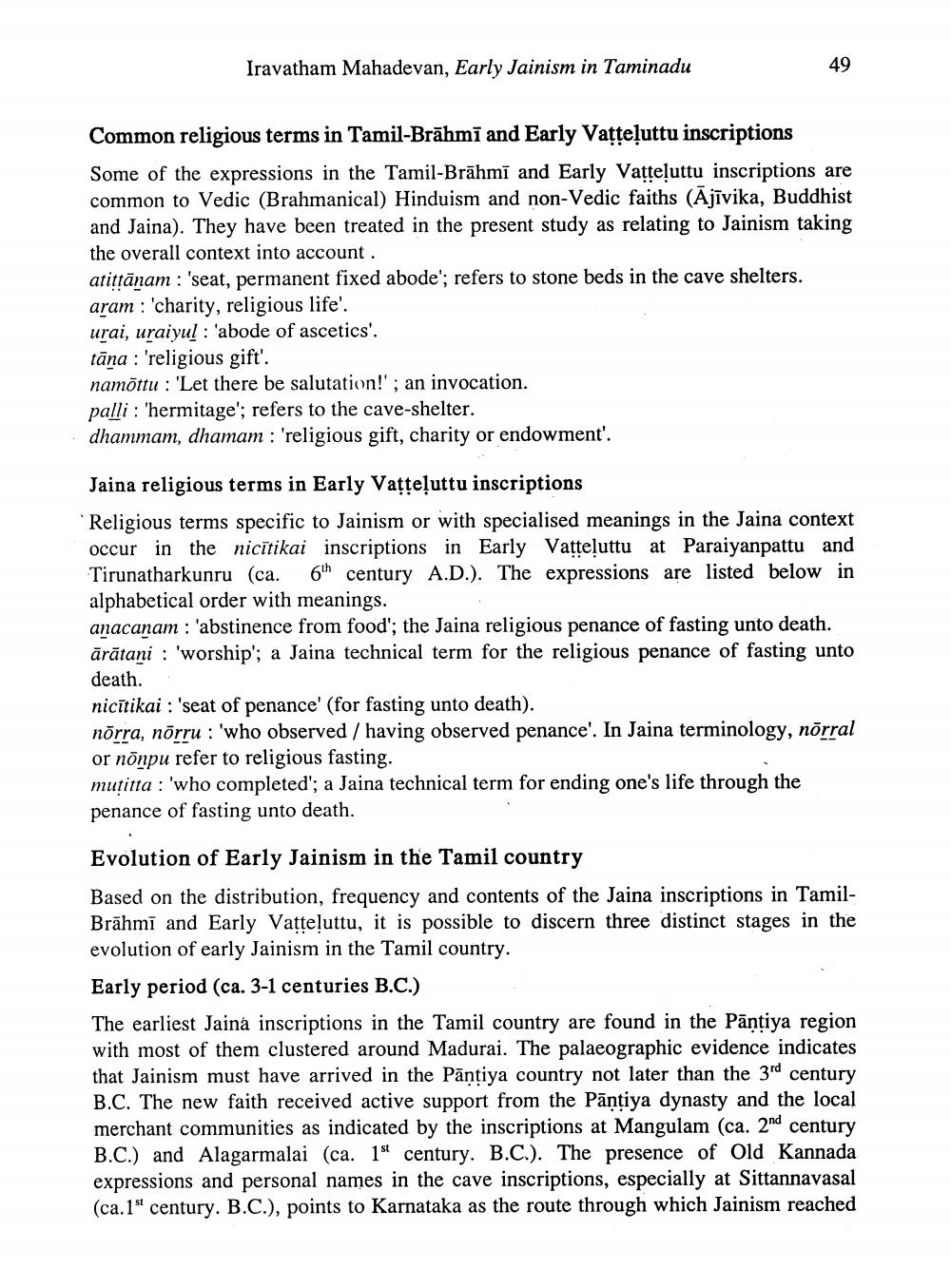________________
Iravatham Mahadevan, Early Jainism in Taminadu
Common religious terms in Tamil-Brähmi and Early Vatteluttu inscriptions
Some of the expressions in the Tamil-Brahmi and Early Vatteļuttu inscriptions are common to Vedic (Brahmanical) Hinduism and non-Vedic faiths (Ajīvika, Buddhist and Jaina). They have been treated in the present study as relating to Jainism taking the overall context into account.
atiṭṭāṇam: 'seat, permanent fixed abode'; refers to stone beds in the cave shelters. aram: 'charity, religious life'.
urai, uraiyul 'abode of ascetics'.
tāna: 'religious gift'.
namottu: 'Let there be salutation!'; an invocation.
palli: "hermitage'; refers to the cave-shelter.
dhammam, dhamam: 'religious gift, charity or endowment'.
49
Jaina religious terms in Early Vatteluttu inscriptions
Religious terms specific to Jainism or with specialised meanings in the Jaina context occur in the nicītikai inscriptions in Early Vatteluttu at Paraiyanpattu and Tirunatharkunru (ca. 6th century A.D.). The expressions are listed below in alphabetical order with meanings.
anacaṇam: 'abstinence from food'; the Jaina religious penance of fasting unto death. ärätani 'worship'; a Jaina technical term for the religious penance of fasting unto death.
nicītikai: 'seat of penance' (for fasting unto death).
nōrra, nōrru: 'who observed / having observed penance'. In Jaina terminology, nōrṛal or nonpu refer to religious fasting.
muțitta: "who completed'; a Jaina technical term for ending one's life through the penance of fasting unto death.
Evolution of Early Jainism in the Tamil country
Based on the distribution, frequency and contents of the Jaina inscriptions in TamilBrahmi and Early Vatteluttu, it is possible to discern three distinct stages in the evolution of early Jainism in the Tamil country.
Early period (ca. 3-1 centuries B.C.)
The earliest Jaina inscriptions in the Tamil country are found in the Päntiya region with most of them clustered around Madurai. The palaeographic evidence indicates that Jainism must have arrived in the Pantiya country not later than the 3d century B.C. The new faith received active support from the Pantiya dynasty and the local merchant communities as indicated by the inscriptions at Mangulam (ca. 2nd century B.C.) and Alagarmalai (ca. 1" century. B.C.). The presence of Old Kannada expressions and personal names in the cave inscriptions, especially at Sittannavasal (ca.1" century. B.C.), points to Karnataka as the route through which Jainism reached




